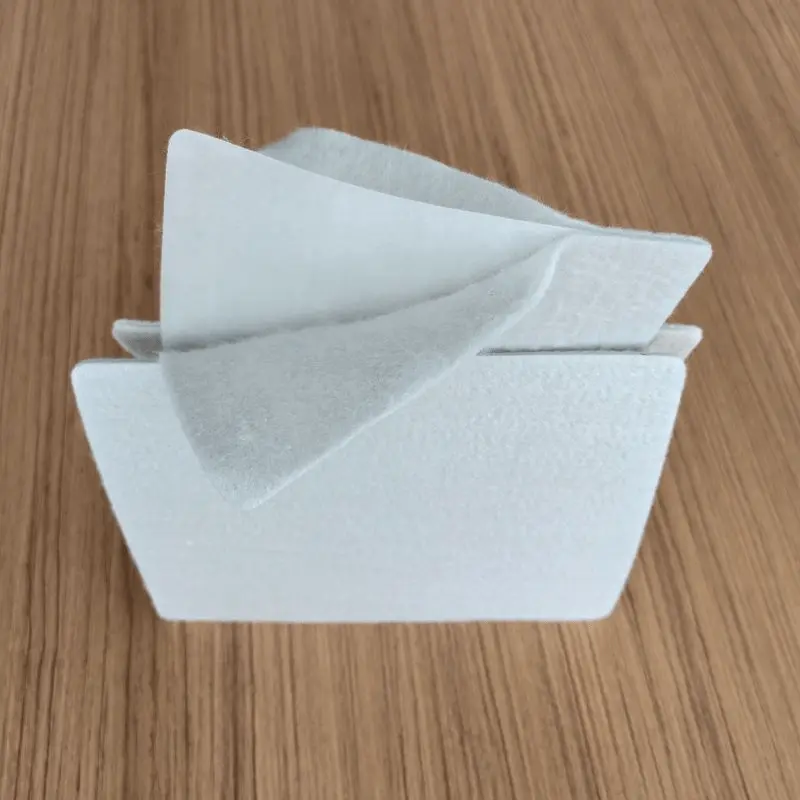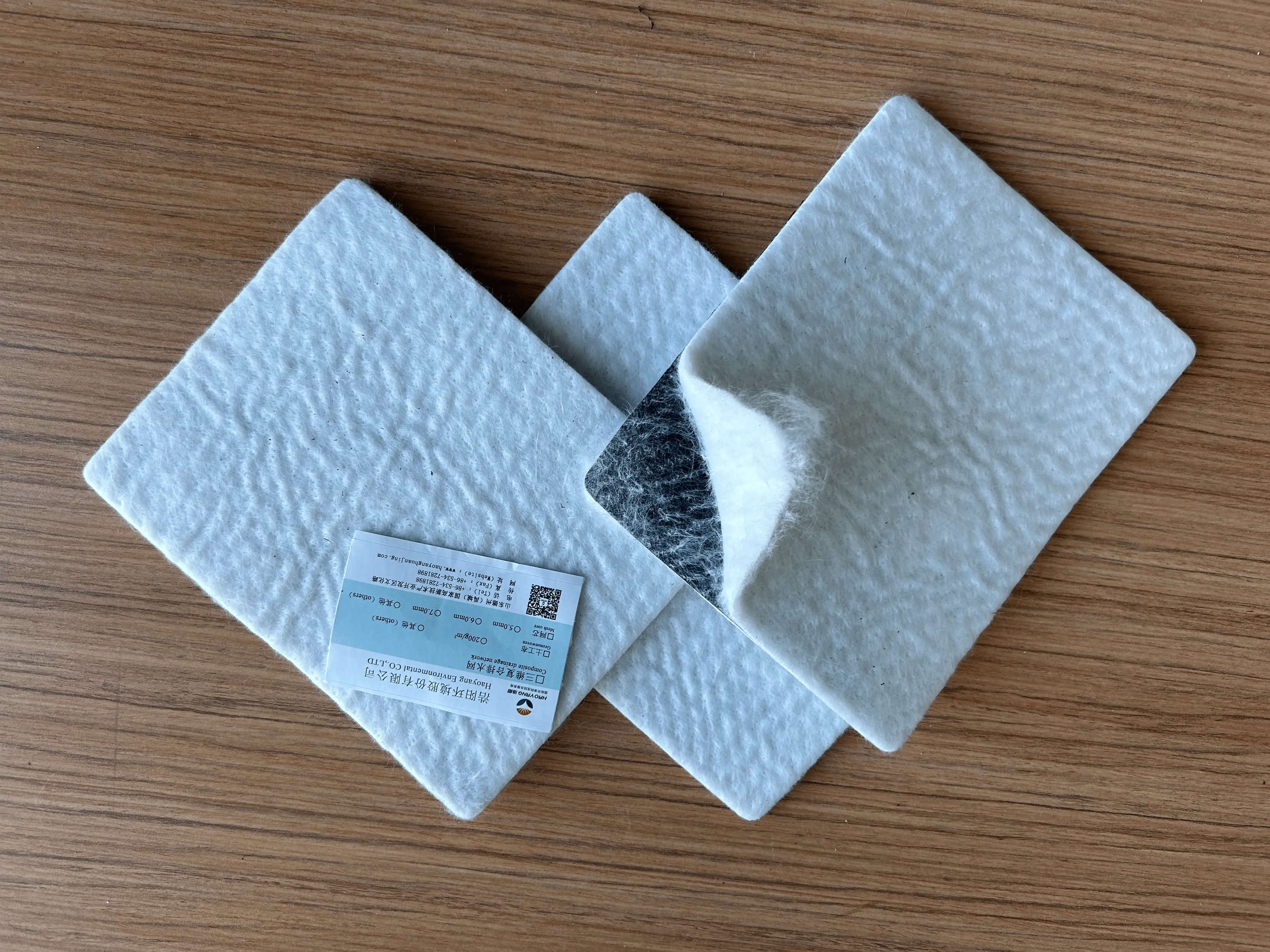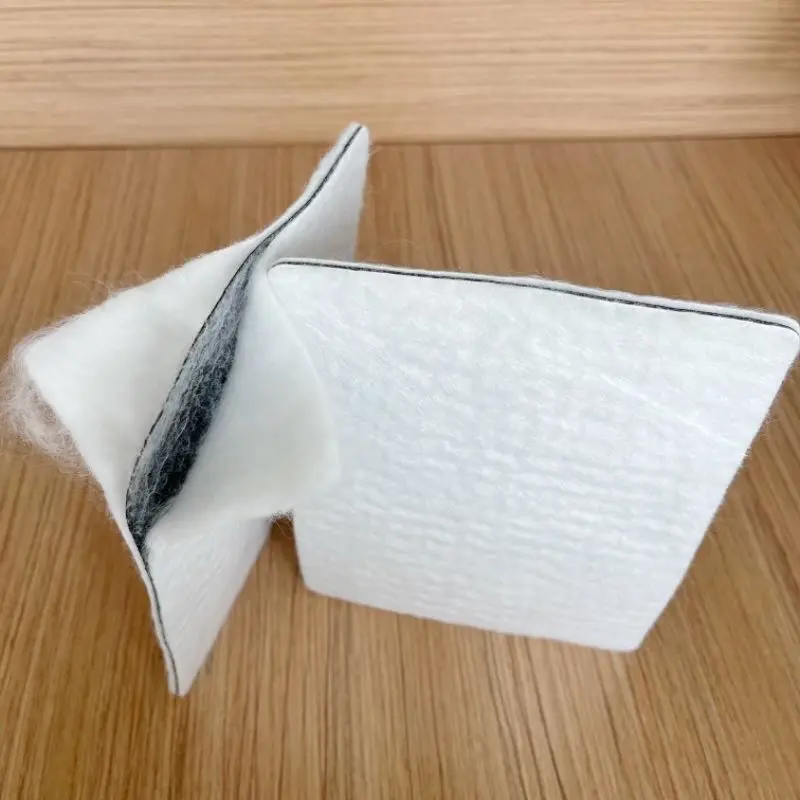Filament Composite Geomembrane for Impermeable Solid Waste Containment of Superfine Fly Ash in Power Plants
Haoyang Environmental Co., Ltd., a leader in geosynthetic materials and environmental engineering solutions, presents its Filament Composite Geomembrane designed specifically for the impermeable containment of superfine fly ash in power plants. Engineered with precision, this geomembrane offers unmatched performance in preventing leachate infiltration and environmental contamination. Our innovative solution aligns with Haoyang's mission to deliver sustainable and reliable environmental protection products.
Product Advantages
Superior Impermeability: Designed to provide high resistance to water and leachate penetration, ensuring long-term environmental safety.
Exceptional Durability: Made from high-quality filament composite materials, the geomembrane exhibits excellent resistance to tearing, punctures, and chemical degradation.
Customizable Specifications: Available in varying thicknesses and permeability options to meet diverse project requirements.
Eco-Friendly: Manufactured using advanced processes that minimize environmental impact, aligning with global sustainability goals.
Enhanced Performance: Offers stability in extreme weather conditions, ensuring reliability across a range of operating environments.
Applications
Solid Waste Containment: Ideal for lining containment areas for superfine fly ash from power plants.
Landfill Linings: Provides impermeable barriers for municipal and industrial waste.
Wastewater Treatment: Serves as a reliable liner for treatment lagoons and evaporation ponds.
Mining and Industrial Sites: Ensures safe storage and containment of hazardous byproducts.
Specifications
| Specification | Details |
|---|---|
| Product Name | Filament Composite Geomembrane |
| Application | Impermeable containment of superfine fly ash in power plants, solid waste landfills, wastewater treatment, mining sites |
| Material | High-quality filament composite |
| Thickness | 2mm - 6mm |
| Tear Resistance | 0.15 - 0.7 |
| Permeability | Customizable according to project requirements |
| Chemical Resistance | Resistant to chemicals and leachates |
| Temperature Stability | Stable under extreme weather conditions |
| Durability | High resistance to punctures, tearing, and aging |
| Environmental Compliance | Eco-friendly manufacturing processes |
| Certifications | ISO 9001, ISO 14001, OHSAS 18001 |
| Customization | Available in various sizes, thicknesses, and permeability levels |
| Standards | Meets international quality and environmental protection standards |
Filament Composite Geomembrane for Preventing and Controlling Ultrafine Fly Ash from Power Plants
The Hazards of Ultrafine Fly Ash in Power Plants
The hazards of the impermeable solid waste of ultra-fine fly ash in power plants are mainly manifested in the following aspects:
1.Environmental pollution: The particles of ultra-fine fly ash are very small and easily dispersed by the wind, polluting the atmosphere. At the same time, if ultra-fine fly ash flows into water bodies, it can cause water pollution.
2.Land resource occupation: A large amount of superfine fly ash requires a large amount of land for stacking, which not only occupies valuable land resources, but also has adverse effects on the surrounding environment.
3. Harm to human health: Superfine fly ash contains a variety of harmful substances, such as heavy metals and radioactive substances, which can cause harm to human health if inhaled or exposed to for a long time.
4. Affecting agricultural production: If the ultra-fine fly ash pollutes the farmland, it will lead to a decline in soil quality and affect the growth and quality of crops.
5. Ecological damage: The large-scale production and disposal of ultra-fine fly ash can cause damage to the ecological environment, such as destroying soil structure and affecting plant growth.
Therefore, effective measures need to be taken to properly dispose of the impermeable solid waste of ultra-fine fly ash from power plants to reduce its impact on the environment and human health. For example, the use of filament composite geomembranes to prevent alkaline leachate from seeping out and polluting the surrounding environment.
The Role That Filament Composite Geomembrane Can Play
Filament composite geomembranes have high tensile strength, corrosion resistance, and aging resistance. In the treatment of ultra-fine fly ash impermeable solid waste in power plants, filament composite geomembranes can play the following roles:
1. Preventing dust pollution from fly ash: The filament composite geomembrane has high tensile strength and wind resistance, which can effectively suppress the dusting of fly ash and reduce the pollution to the surrounding environment.
2. Preventing leakage and pollution of fly ash: The filament composite geomembrane has good impermeability, which can effectively prevent the leakage of fly ash and avoid pollution to groundwater and soil.
3. Preventing erosion of fly ash: The filament composite geomembrane has high corrosion resistance, which can effectively prevent the erosion of chemical substances in fly ash on the geomembrane and extend its service life.
4. Convenient for stacking and utilization of fly ash: The filament composite geomembrane has certain strength and flexibility, which can facilitate the stacking and transportation of fly ash, and is also conducive to the resource utilization of fly ash.
In summary, filament composite geomembranes can play an important role in the treatment of ultra-fine fly ash impermeable solid waste in power plants, which is beneficial for reducing pollution, protecting the environment, and recycling resources. However, it is important to note that the properties and treatment methods of fly ash from different power plants may vary, and the selection of appropriate geomembrane materials and treatment schemes requires evaluation and selection based on actual conditions.
Project Examples
Below is an example of the impermeable solid waste disposal project for ultra-fine fly ash in power plants by Haoyang Environmental Co., Ltd:
125099.webp)
(The construction site of the project of the disposal and storage area of ultra-fine fly ash impermeable solid waste in Lingwu Power Plant of China Huadian Corporation is located in Lingwu City, Ningxia Hui Autonomous Region)
The planned construction period is from October 2015 to September 2018 (implemented in three years). The current scale: the newly built ultra-fine fly ash comprehensive utilization project with an annual output of 3 million tons in Lingwu Power Plant of China Huadian Corporation is invested and constructed by Hangzhou Jinjiang Group Ningxia Jinxiang Industry Company. The company is a National Development and Reform Commission circular economy "double hundred backbone" enterprise, a key demonstration enterprise for industrial impermeable solid waste comprehensive treatment in the autonomous region, with a total investment of 520 million yuan and covering an area of 185 acres. The main construction includes fly ash grinding stations, scientific research centers, ash storage areas, etc., with an annual processing capacity of 3 million tons of fly ash. It is estimated that the project will generate an annual sales revenue of 3 billion yuan, which can fully solve the fly ash generated by China Huadian Corporation in Lingwu Power Plant every year and achieve the comprehensive recycling of industrial waste residue. The project has adopted long-fiber composite geomembrane in the seepage prevention system to prevent alkaline leachate from leaking out and polluting the surrounding environment.
This project adopts our company's long-fiber composite geomembrane, which not only has the functions of closure, seepage prevention, isolation, reinforcement, protection, but also has good corrosion resistance, aging resistance, suitable for the undulating site terrain and alkaline waste residue storage requirements for a long time.
Now the project has been put into use and achieved good environmental and economic results. The long-fiber composite geomembrane products have the characteristics of high strength, strong puncture resistance, acid and alkali resistance, corrosion resistance, microorganism resistance and aging resistance. It has excellent filtration and soil retention properties, playing a role in isolation, drainage filtration and protection.
Company Advantages
Expertise and Innovation: Backed by over a decade of R&D in geosynthetics, Haoyang is a trusted name in environmental engineering.
Certifications and Recognition: ISO 9001, ISO 14001, OHSAS 18001 certified, with recognition as a "Shandong Enterprise Technology Center."
Patented Solutions: Holder of 3 invention patents and 32 utility model patents, ensuring advanced, high-quality products.
Comprehensive Services: From consulting and design to manufacturing and implementation, Haoyang provides end-to-end project support.
Global Reputation: Proven track record in delivering sustainable solutions across various industries worldwide.
Partner with Haoyang Environmental for innovative and reliable impermeable solutions tailored to safeguard the environment and support your project needs. Leave us a message now.
822.webp)

894.webp)

925.webp)
503.webp)
759.webp)
992.webp)

855.webp)